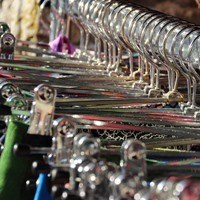(BRUSSELS) – The EU Commission set out plans Wednesday to tackle fast fashion, textile waste and the destruction of unsold textiles with a new strategy to make textiles more durable, repairable, reusable and recyclable.
European consumption of textiles has the fourth highest impact on the environment and climate change, after food, housing and mobility. It is also the third highest area of consumption for water and land use, and fifth highest for the use of primary raw materials.
The EU Strategy for Sustainable and Circular Textiles sets out the vision and concrete actions to ensure that by 2030 textile products placed on the EU market are long-lived and recyclable, made as much as possible of recycled fibres, free of hazardous substances and produced in respect of social rights and the environment.
Consumers will benefit longer from high quality textiles, fast fashion should be out of fashion, and economically profitable re-use and repair services should be widely available. In a competitive, resilient and innovative textiles sector, producers have to take responsibility for their products along the value chain, including when they become waste.
In this way, the circular textiles ecosystem will be thriving, and be driven by sufficient capacities for innovative fibre-to-fibre recycling, while the incineration and landfilling of textiles has to be reduced to the minimum.
The specific measures will include ecodesign requirements for textiles, clearer information, a Digital Product Passport and a mandatory EU extended producer responsibility scheme. It also foresees measures to tackle the unintentional release of microplastics from textiles, ensure the accuracy of green claims, and boost circular business models, including reuse and repair services. To address fast fashion, the Strategy also calls on companies to reduce the number of collections per year, take responsibility and act to minimise their carbon and environmental footprints, and on Member States to adopt favourable taxation measures for the reuse and repair sector. The Commission will promote the shift also with awareness-raising activities.
The Strategy also aims to provide support to and accompany the textiles ecosystem throughout its transformative journey. Therefore, the Commission is launching today the co-creation of a transition pathway for the textiles ecosystem. This is an essential collaborative tool to help the ecosystem to recover from negative impacts of the Covid-19 pandemic which have been affecting companies in their daily operations for the last two years. It will also strengthen their capacities to withstand both a fierce global competition and future shocks for their long-term survival. All the actors are encouraged to take active part in the co-creation process through their commitments on circularity and circular business models, actions to strengthen sustainable competitiveness, digitalisation and resilience, and identification of specific investments needed for the twin transition.
Textiles Strategy guide
Factsheet on Textiles Strategy
EU Strategy for Sustainable and Circular Textiles



